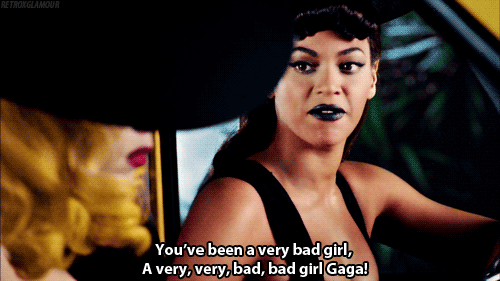 Sourcing is one of those skill sets that you continue to use even after you leave recruiting—and just as relevant if your new job, like mine, involves generating marketing-qualified leads. I’ve used dozens of Chrome extensions, CRM and ATS plug-ins, and I’ve experimented with pretty much every social network or search engine over the past decade or so.
Sourcing is one of those skill sets that you continue to use even after you leave recruiting—and just as relevant if your new job, like mine, involves generating marketing-qualified leads. I’ve used dozens of Chrome extensions, CRM and ATS plug-ins, and I’ve experimented with pretty much every social network or search engine over the past decade or so.
At the end of the day, all I really know is that things might have drastically changed online, but the same basic best practices for finding just the right candidate just in time (or anytime) remain the same as when I first started out in recruiting.
You don’t need to Ask Jeeves to know how important developing, executing or optimizing these 5 candidate sourcing commandments are for your recruiting success—consider them your greatest asset for finding the “greatest asset” at every company.
Sure Shot: 5 Simple Steps For Supercharging Your Sourcing Strategy.
Just please never actually say that cliché in any conversation with a candidate or in any recruiting collateral, online or off—the “greatest asset” metaphor is more hackneyed and inane than a poorly researched, highly speculative Top 10 post about talent attraction best practices.
Please enjoy.
1. Root Down: Look Long Term.
 No matter what position you happen to be sourcing for, if you only look at each candidates’ resume or social profile in the context of an active search, then you’re forced to, more or less, reinvent the wheel with each req.
No matter what position you happen to be sourcing for, if you only look at each candidates’ resume or social profile in the context of an active search, then you’re forced to, more or less, reinvent the wheel with each req.
If you only look for specific matches for narrowly defined position descriptions, then there’s no point in building a pipeline, period—when you live for today, post and pray is always okay.
It’s no secret that recruiters rely on LinkedIn (maybe even a little too much) because it makes sourcing pretty much idiot-proof by providing a single, ostensibly reliable source for candidate information and communication. Although 92% of employers report to recruiting on LinkedIn, that same convenience comes at the cost of diminishing returns and recruiting ROI.
Recruiters need to realize that LinkedIn is just a candidate database, the same as any job board, talent community, CRM or applicant tracking system—and every database a recruiter has access to can be, more or less, leveraged like LinkedIn.
Every interaction you have with a candidate, irrespective of where you sourced them, is the door to an entire network of second and third degree connections—which is why even if a candidate isn’t right for right now, they not only might be for another role someday soon, but know somebody who’s a better fit for your open opportunities.
2. Check Your Head: Be Selective With Submissions.
 Recruiters tend to think that taking the time to direct source, screen and soft sell a qualified, interested candidate who isn’t knocked out because of comp should automatically be submitted for consideration.
Recruiters tend to think that taking the time to direct source, screen and soft sell a qualified, interested candidate who isn’t knocked out because of comp should automatically be submitted for consideration.
Once we establish a candidate meets a certain baseline, the standard process is to send their resume or social profile to the hiring manager for consideration.
But even if you can quickly figure out the perfect fit, here’s a crazy thought: Don’t ever send in the first 2-3 qualified candidates you source or screen when starting a new search. Seriously. Hold your hiring horses, already.
The reason why you shouldn’t just pull the trigger on submitting a matching candidate too quickly is that finding qualified candidates quickly isn’t the goal. It’s our jobs to source and recruit the best candidates, even if that takes longer than simply submitting the first few fits you find.
Statistically speaking, there’s no chance in hell the first two or three people you find also happen to be the best possible candidates available; the math here should be fairly obvious, big data be damned.
With 5 finalists on the average slate, you should look at sourcing and screening at least two or three times that magic number before stack ranking and submitting the top candidates to your hiring manager.
Ten or 15 qualified candidates might sound like a lot for many reqs reliant on direct sourcing, but the thing is, you’re not looking for just talent, but top talent, too, which is why recruiters should submit no more than half of all your qualified candidates (hence the minimum 10 choices for every slate of finalists).
Top talent doesn’t live in the bottom 50%, and that’s the bottom line.
3. Hello Nasty: Never Settle On A Single Source Or Search.
 No matter how good you are at building Boolean Strings or how many Twitter followers or Facebook fans you might have, no matter if you’re recruiting for the same role you’ve already filled a hundred times or starting out on your first ever search, it’s impossible that you’ll be able to completely exhaust the possibility of uncovering more qualified candidates in any searchable database, search engine or social network. Seriously.
No matter how good you are at building Boolean Strings or how many Twitter followers or Facebook fans you might have, no matter if you’re recruiting for the same role you’ve already filled a hundred times or starting out on your first ever search, it’s impossible that you’ll be able to completely exhaust the possibility of uncovering more qualified candidates in any searchable database, search engine or social network. Seriously.
Even if you had found every single needle in the haystack, how could you know that a better potential hire might not be setting up his LinkedIn profile or reading your company’s Glassdoor reviews at this exact moment? Unlikely, sure, but not impossible. This is why it’s imperative to understand that sourcing never stops, and our jobs aren’t over when we get close to an offer or onboard a candidate.
If you think you’ve exhausted all the talent pools, social networks and search strings out there that could potentially lead to new hires, well then, think again.
4. Ill Communication: Give the Benefit of the Doubt.
 The candidates you’re sourcing and engaging likely aren’t professional writers or content marketing or branding experts, which is why you should always give a poorly written resume or social profile the benefit of the doubt. Your goal is to make them stick to their day jobs anyhow, so their copywriting skills are likely largely irrelevant when it comes to anything related to your recruiting initiatives.
The candidates you’re sourcing and engaging likely aren’t professional writers or content marketing or branding experts, which is why you should always give a poorly written resume or social profile the benefit of the doubt. Your goal is to make them stick to their day jobs anyhow, so their copywriting skills are likely largely irrelevant when it comes to anything related to your recruiting initiatives.
Whether you’re recruiting registered nurses or certified public accountants, network administrators or project managers, a senior leader or a recent grad, the one thing that no recruiter ever looks for, ironically, is a professional resume writer or personal branding consultant.
Sure, there are a lot of them out there, but you’re recruiting for highly skilled, hard-to-fill, mission-critical roles, so who cares whether their objective statement is succinct enough or not? Why would you ever knock out a potential rock star for something as subjective as having too many pages on their resume? Seriously.
Just like you should never judge a book by its cover, you should never judge a candidate based on their resume, search results or social profiles alone. Give them the benefit of the doubt and if everything else looks like it matches up, then give them a call, too.
5. The Mix Up: Look Before You Leap.
 In recruiting, we too often mistake inaction for inactivity, but when it comes to sourcing, there’s an appreciable difference.
In recruiting, we too often mistake inaction for inactivity, but when it comes to sourcing, there’s an appreciable difference.
That’s why instead of just jumping into a search headfirst with nothing more than a spec and some search strings, taking a step back and actually creating a scalable, sustainable sourcing strategy is almost always a good idea (and almost always ends up saving time and effort in the end).
Hard to fathom, but you don’t have to do anything but be thoughtful to be doing your job—and if you’re building a pipeline without having a plan, then you’re really just doing the direct sourcing equivalent of posting and praying… submitting $h!t to see what sticks is the oldest game in the recruiting book.
But even though you can polish a turd, you can’t make it shine—and you can’t shine in sourcing without some sort of formal strategy informing your efforts. The more time you spend on the front end of the search and the more detailed your sourcing plan, the more relevant your search results are going to be and the more productive you’ll be when sourcing and screening a potential slate of submissions.
With a plan, you’ll find more candidates more quickly while costing less money and taking less time to fill open jobs. Which is kind of the point of recruiting, really.
Matt Charney is the Executive Editor of Recruiting Daily. Follow him on Twitter @MattCharney or connect with him on LinkedIn.
 After Monster announced its acquisition to Randstad last month, one of the inevitable questions that arose was, “What’s going to happen to CareerBuilder now?” The answer is becoming more clear with their latest purchase.
After Monster announced its acquisition to Randstad last month, one of the inevitable questions that arose was, “What’s going to happen to CareerBuilder now?” The answer is becoming more clear with their latest purchase.
 Joel Cheesman has over 20 years experience in the online recruitment space. He worked for both international and local job boards in the late ‘90s and early ‘00s. In 2005, Cheesman founded HRSEO, a search engine marketing company for HR, as well as launching an award-winning industry blog called Cheezhead.
Joel Cheesman has over 20 years experience in the online recruitment space. He worked for both international and local job boards in the late ‘90s and early ‘00s. In 2005, Cheesman founded HRSEO, a search engine marketing company for HR, as well as launching an award-winning industry blog called Cheezhead.



 From the marketing lense, we realize the reason tag works is because there’s an endless stream of sharing and connectivity. We’re constantly looking for the next person, it’s easy to add new people to the mix and there are player dynamics. All elements of a great game and, in marketing or recruiting – a great referral program.
From the marketing lense, we realize the reason tag works is because there’s an endless stream of sharing and connectivity. We’re constantly looking for the next person, it’s easy to add new people to the mix and there are player dynamics. All elements of a great game and, in marketing or recruiting – a great referral program.

 Sourcing is one of those skill sets that you continue to use even after you leave recruiting—and just as relevant if your new job, like mine, involves generating marketing-qualified leads. I’ve used
Sourcing is one of those skill sets that you continue to use even after you leave recruiting—and just as relevant if your new job, like mine, involves generating marketing-qualified leads. I’ve used  No matter what position you happen to be sourcing for, if you only look at each candidates’ resume or social profile in the context of an active search, then you’re forced to, more or less, reinvent the wheel with each req.
No matter what position you happen to be sourcing for, if you only look at each candidates’ resume or social profile in the context of an active search, then you’re forced to, more or less, reinvent the wheel with each req. Recruiters tend to think that taking the time to direct source, screen and soft sell a qualified, interested candidate who isn’t knocked out because of comp should automatically be submitted for consideration.
Recruiters tend to think that taking the time to direct source, screen and soft sell a qualified, interested candidate who isn’t knocked out because of comp should automatically be submitted for consideration. No matter how good you are at building Boolean Strings or how many Twitter followers or Facebook fans you might have, no matter if you’re recruiting for the same role you’ve already filled a hundred times or starting out on your first ever search, it’s impossible that you’ll be able to completely exhaust the possibility of
No matter how good you are at building Boolean Strings or how many Twitter followers or Facebook fans you might have, no matter if you’re recruiting for the same role you’ve already filled a hundred times or starting out on your first ever search, it’s impossible that you’ll be able to completely exhaust the possibility of  The candidates you’re sourcing and engaging likely aren’t professional writers or content marketing or branding experts, which is why you should always give a poorly written resume or social profile the benefit of the doubt. Your goal is to make them stick to their day jobs anyhow, so their copywriting skills are likely largely irrelevant when it comes to anything related to your recruiting initiatives.
The candidates you’re sourcing and engaging likely aren’t professional writers or content marketing or branding experts, which is why you should always give a poorly written resume or social profile the benefit of the doubt. Your goal is to make them stick to their day jobs anyhow, so their copywriting skills are likely largely irrelevant when it comes to anything related to your recruiting initiatives. In recruiting, we too often mistake inaction for inactivity, but when it comes to sourcing, there’s an appreciable difference.
In recruiting, we too often mistake inaction for inactivity, but when it comes to sourcing, there’s an appreciable difference.




 Who runs the world? Girls, if you ask Beyonce. Unfortunately, that doesn’t always translate to the workplace. Statistically, women are underrepresented in almost every leadership team in every industry. The facts and statistics are committed to most of our memories now: women make 76 cents to the dollar a man makes. The anomalies of female leadership and discrepancies in pay fill headlines and advice columns with directions on “how to take a stand” and “how to demand equality.”
Who runs the world? Girls, if you ask Beyonce. Unfortunately, that doesn’t always translate to the workplace. Statistically, women are underrepresented in almost every leadership team in every industry. The facts and statistics are committed to most of our memories now: women make 76 cents to the dollar a man makes. The anomalies of female leadership and discrepancies in pay fill headlines and advice columns with directions on “how to take a stand” and “how to demand equality.” A new law in Massachusetts is helping us move in the right direction. If you recruit in the northeast, or anywhere in the US – you’ve seen the headlines like, “
A new law in Massachusetts is helping us move in the right direction. If you recruit in the northeast, or anywhere in the US – you’ve seen the headlines like, “ Procedurally, the Pay Equity Act makes it easier for applicants and employees to bring claims against the employer. Unlike other claims of discrimination or claims for violations of the Wage Act, claims for violations of the Pay Equity Act do not need to be first brought to the Massachusetts Commission Against Discrimination (MCAD) or the Attorney General, respectively. In addition, the statute of limitations has been expanded from 300 days to three years. Claims under the Act may be filed by individuals, as a class of plaintiffs, or by the Commonwealth’s Attorney General.
Procedurally, the Pay Equity Act makes it easier for applicants and employees to bring claims against the employer. Unlike other claims of discrimination or claims for violations of the Wage Act, claims for violations of the Pay Equity Act do not need to be first brought to the Massachusetts Commission Against Discrimination (MCAD) or the Attorney General, respectively. In addition, the statute of limitations has been expanded from 300 days to three years. Claims under the Act may be filed by individuals, as a class of plaintiffs, or by the Commonwealth’s Attorney General. There are several steps employers would be well advised to take to ensure compliance with the Act. Specifically, employers should:
There are several steps employers would be well advised to take to ensure compliance with the Act. Specifically, employers should:


 ZipRecruiter pricing isn’t easily available, and I’m sure pricing is custom in many cases. However, a package of 10 “slots,” or listings, used to cost $50-per-month by news accounts and online resources will soon be $249. This represents a 500 percent increase. A package of 50 job slots, which is reported to be “about $200,” is now going to be $1,200, a 600 percent bump.
ZipRecruiter pricing isn’t easily available, and I’m sure pricing is custom in many cases. However, a package of 10 “slots,” or listings, used to cost $50-per-month by news accounts and online resources will soon be $249. This represents a 500 percent increase. A package of 50 job slots, which is reported to be “about $200,” is now going to be $1,200, a 600 percent bump.
 Music has always played one of the most formative elements of our own personal stories. There are certain songs, or artists, or albums that inevitably transport us back immediately to a certain time or specific memory in our lives the moment we hear them.
Music has always played one of the most formative elements of our own personal stories. There are certain songs, or artists, or albums that inevitably transport us back immediately to a certain time or specific memory in our lives the moment we hear them.
 Structured hiring is all about partnerships. At the beginning of the process,
Structured hiring is all about partnerships. At the beginning of the process, 



 The “black hole” swallows military veterans up and your smile and promise of being friendly is seen as just another corporate ruse. The candidate experience is part of the reason a
The “black hole” swallows military veterans up and your smile and promise of being friendly is seen as just another corporate ruse. The candidate experience is part of the reason a  Remember this is not about handshakes at job fairs, putting American flags on our website, offering a military discount, or saying “welcome home.” Those are all nice things, but success is about a sustainable strategy which continues to drive veteran hiring outcomes.
Remember this is not about handshakes at job fairs, putting American flags on our website, offering a military discount, or saying “welcome home.” Those are all nice things, but success is about a sustainable strategy which continues to drive veteran hiring outcomes.



 Now maybe you’re thinking I’m overreacting a bit. After all, if this guy has experienced this kind of shit-tastic behavior in potential employers, he may be right to sound the alarm. But instead of checking the business and their archaic notions, he challenges the holder of the ring. In the author’s own words:
Now maybe you’re thinking I’m overreacting a bit. After all, if this guy has experienced this kind of shit-tastic behavior in potential employers, he may be right to sound the alarm. But instead of checking the business and their archaic notions, he challenges the holder of the ring. In the author’s own words:



 There’s a running narrative among recruiting and HR people in which the concept of the “gig economy” is held as a sort of utopian progression of work.
There’s a running narrative among recruiting and HR people in which the concept of the “gig economy” is held as a sort of utopian progression of work. While the company claims that its drivers make an average of $25 an hour, or a median of 90k a year,
While the company claims that its drivers make an average of $25 an hour, or a median of 90k a year,  The fact is, the “gig economy” does nothing to increase opportunity or class mobility or any of the Horatio Alger fairy tales so breathlessly reported by the business press and blogosphere.
The fact is, the “gig economy” does nothing to increase opportunity or class mobility or any of the Horatio Alger fairy tales so breathlessly reported by the business press and blogosphere. 

 The monstrous melodrama continues.
The monstrous melodrama continues. One interesting sidenote, Monster highlights the fact that the competitive landscape is toughening: “competition is intensifying from companies that are owned by substantially larger and better capitalized parents that can afford to compete aggressively on product pricing in pursuit of market share.”
One interesting sidenote, Monster highlights the fact that the competitive landscape is toughening: “competition is intensifying from companies that are owned by substantially larger and better capitalized parents that can afford to compete aggressively on product pricing in pursuit of market share.”
 My first name is not passive; it’s not Talent. My Mom never gave birth to a child named Candidate; my Dad never told his friends,
My first name is not passive; it’s not Talent. My Mom never gave birth to a child named Candidate; my Dad never told his friends,  Our names are Derek and Steve, and we don’t know what to say to these people. They are people you know – those resumes you’re holding. Not sure when we forgot that but we’re still left speechless by the outcome. These resumes aren’t the whole story for people who have names and lives – stories to tell and experiences that could change your company.
Our names are Derek and Steve, and we don’t know what to say to these people. They are people you know – those resumes you’re holding. Not sure when we forgot that but we’re still left speechless by the outcome. These resumes aren’t the whole story for people who have names and lives – stories to tell and experiences that could change your company. 

